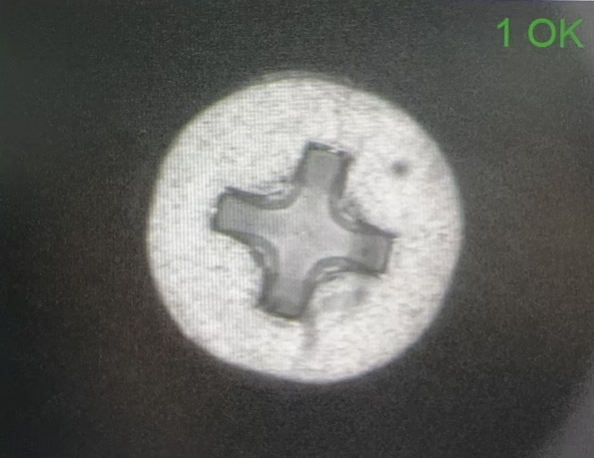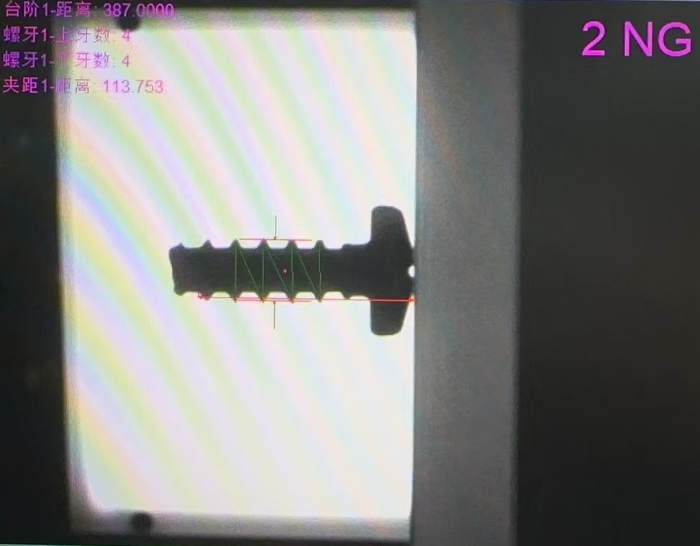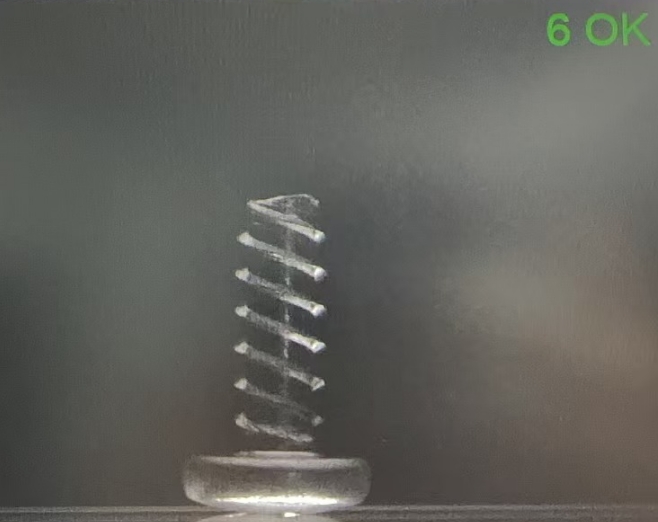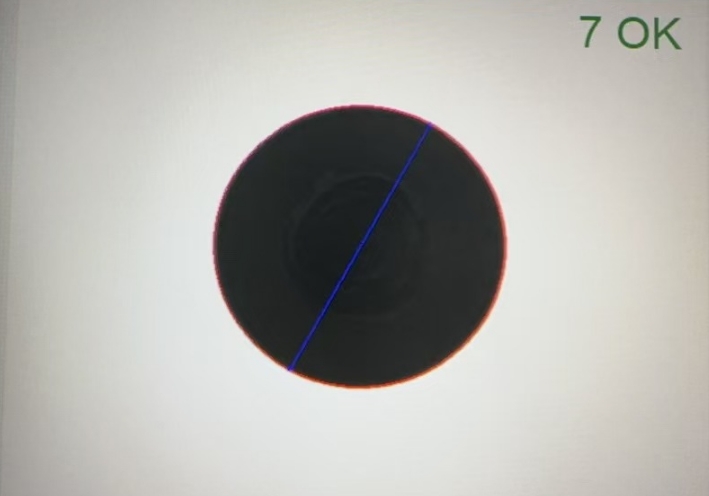
The Synergy of Precision: Optical Sorting for Washer-Fastener Assemblies
2025-06-09 21:19In the intricate world of precision fastening, the humble washer-fastener assembly (a screw combined with a pre-assembled washer) plays a crucial role. Whether ensuring proper load distribution, preventing loosening, or acting as a seal, the integrity of this bonded pair is paramount. A single defective assembly – a washer out of spec, a marred screw thread, a missing washer altogether, or misalignment between components – can compromise joint integrity, lead to premature failure, and incur significant costs. Traditional visual inspection struggles with the speed, consistency, and microscopic detail required for modern high-volume production. Enter the Washer-Fastener Assembly Optical Sorting Machine: A sophisticated vision system engineered to guarantee the perfection of these critical components.
This advanced equipment transcends simple visual checks. It’s a comprehensive automated inspection platform meticulously designed to scrutinize both the individual components and their assembly state simultaneously. Its mission is unambiguous: Achieve 100% inspection throughput while detecting the tiniest flaws that threaten quality and reliability. Like its counterpart for rivet caps, it leverages a powerful integration of core systems:
High-Speed Vision Capture: The Unblinking Observer
The cornerstone is the optical acquisition system. Unlike simpler setups, this employs multiple high-resolution, high-speed cameras often strategically positioned (overhead, side-view(s), angled) with specialized lighting configurations:Screw Head: Diameter, height, drive type (Philips, Torx, hex, etc.) integrity, surface defects (dents, scratches, plating issues).
Screw Threads: Presence, pitch integrity, major/minor diameter, potential damage (cross-threading defects, smeared threads).
Shank: Straightness, diameter consistency, surface defects.
Washer: Top & bottom surfaces for scratches, dents, plating flaws, burrs. Inner/outer diameter, thickness.
Assembly: Washer concentricity with screw shank/head, washer presence/absence, washer orientation (if relevant), gap between washer and screw head.
Lighting Mastery: Utilizes brightfield, darkfield, coaxial, and potentially backlighting techniques optimized for metal surfaces. This is crucial to illuminate screw threads clearly, reveal tiny scratches or dents on washers and screw heads, detect surface contamination, and precisely measure critical features against contrasting backgrounds.
Multi-Perspective Imaging: Dedicated views capture:
High Frame Rate: Synchronized to the machine's feed rate, capturing crystal-clear images of rapidly moving assemblies without motion blur.
Advanced Image Processing: The Instantaneous Analyst
Capturing the image is just the beginning. Powerful image processing hardware (CPUs, GPUs, FPGAs) combined with sophisticated software transforms raw pixels into actionable intelligence:Scratches, Dents, Pits, Galling: On screw head, washer surfaces, screw thread flanks.
Contamination: Presence of foreign material like dust, oil stains, metal chips.
Plating Defects: Peeling, blistering, uneven coating.
Cracks: Especially critical on high-strength screws or load-bearing washers.
Geometrics: Screw head diameter/height, thread major/minor diameter, washer OD/ID/thickness, washer-to-head distance.
Form & Shape: Screw head contour, thread profile integrity, washer flatness/roundness.
Presence/Absence: Confirming the washer is present and correctly assembled.
Alignment: Quantifying washer concentricity relative to the screw axis.
Preprocessing: Optimizing image contrast, reducing noise, and enhancing key features based on lighting conditions.
Feature Extraction & Analysis: Sophisticated algorithms measure dimensions with micron-level precision:
Flaw Detection Algorithms: Identifying surface defects that defy simple measurement:
AI & Machine Learning (Cutting-Edge): Adapting algorithms to improve defect recognition over time, categorize flaw types automatically, and enhance sorting accuracy, even for subtle or complex imperfections.







Rapid Decision Making: The Quality Gatekeeper
Processing results are instantly compared against predefined, strict tolerance parameters (customer specs or internal standards). Decisions are binary and lightning-fast:PASS: The assembly meets all defined dimensional, surface quality, and assembly criteria.
REJECT: The assembly exhibits one or more disqualifying defects.
This verdict is issued within milliseconds per assembly, providing real-time feedback on production quality.Precision Material Handling & Sorting: The Reliable Executor
The advanced vision and intelligence mean nothing without precise, synchronized handling:Gentle & Controlled Feeding: Vibratory bowl feeders or linear conveyors designed to orient and separate washer-screw assemblies reliably without causing damage or dislodging the washer. Crucial for consistent presentation under the cameras.
Stable Presentation: Turntables or precisely indexed linear transport ensures assemblies stop momentarily (eliminating motion blur) or move at a known, constant speed under the camera FOV.
High-Speed Rejection: Based on the real-time "REJECT" signal, pneumatic jets, pushers, or precisely timed diverter arms instantly eject the defective assembly into a reject chute without disturbing the passing good parts. Speed and reliability are vital to maintain high throughput.
Accurate Pass Handling: Confirmed good assemblies are safely guided to the accepted parts outlet for packaging or downstream processes.
Comprehensive Detection Capabilities:
The integrated power of an optical sorter for washer-fastener assemblies addresses the unique challenges of this component:
Screw Defects:
Head: Diameter/height out-of-tolerance, incorrect or damaged drive, surface imperfections (scratches, dents, plating flaws).
Threads: Damaged, crushed, stripped threads; incorrect pitch; chipped or missing threads; galling; under/oversized diameters; cross-threading damage.
Shank: Bend, twist, surface blemishes, incorrect diameter/length.
Point: Damage (mushrooming, bending).
Material: Surface cracks, porosity.
Washer Defects:
Size: OD, ID, thickness out-of-spec.
Form: Non-round (elliptical), bent/cupped, burrs.
Surface: Scratches, dents, pits, plating defects, contamination.
Material: Cracks, splits.
Assembly Defects:
Missing Washer: Critical failure.
Incorrect Washer: Wrong size, type, or material.
Washer Misalignment: Off-center relative to screw axis.
Improper Washer Orientation: If washers are directional (e.g., beveled).
Pre-assembly Damage: Damage occurring after washer placement but before final use.
Contamination: Foreign material trapped between washer and screw head.
The Transformative Impact on Manufacturing:
Implementing automated optical sorting delivers profound operational and quality advantages:
Absolute 100% Inspection: Every single component assembly is rigorously checked, eliminating the risks inherent in statistical sampling or manual inspection fatigue. Guaranteed quality out the door.
Unparalleled Consistency & Objectivity: Eliminates human subjectivity and error. The machine applies the exact same criteria relentlessly, hour after hour, ensuring reliable, unbiased quality decisions.
Superhuman Speed & Throughput: Processes assemblies at the pace of modern production lines (thousands per hour), far exceeding manual inspection capabilities and maintaining high OEE.
Zero Escape Rate: Dramatically reduces the risk of defective assemblies reaching customers or critical assemblies, preventing warranty claims, recalls, and reputational damage.
Significant Cost Reduction: Lowers labor costs associated with manual sorting, reduces scrap by catching defects early, minimizes customer returns, and avoids costly production pauses due to downstream issues caused by bad parts.
Rich Production Intelligence: Generates detailed data on defect types, quantities, and trends. Enables Statistical Process Control (SPC) for early detection of tooling wear (e.g., thread rolling dies), material issues, or process drift upstream.
Enhanced Process Control & Traceability: Provides auditable proof of inspection, supporting quality certifications.
Critical Industry Applications:
The reliability of washer-fastener assemblies is non-negotiable in numerous demanding sectors:
Automotive: Used extensively in engines, transmissions, chassis, interiors, and electronics. Failure can lead to safety recalls (e.g., steering components).
Aerospace: Demanding applications where fastener failure is catastrophic. Requires absolute perfection.
Electronics: Securing critical components in computers, servers, appliances, where vibration resistance and electrical grounding often rely on the assembly integrity.
Furniture & Appliances: Ensuring long-term structural integrity and avoiding visible surface defects.
Medical Equipment: Where reliability and freedom from contamination are essential.
Construction & Heavy Machinery: High-load applications demanding flawless strength and assembly.
Conclusion:
The Washer-Fastener Assembly Optical Sorting Machine is no longer a luxury; it’s a fundamental pillar of modern precision manufacturing. By merging high-speed imaging, sophisticated image analysis, and flawless physical execution, it solves the inherent weaknesses of manual inspection for these critical components. It guarantees that every single assembly – screw, washer, and their union – meets the stringent requirements of today's demanding applications. Investing in this technology is an investment in product reliability, brand protection, operational efficiency, and manufacturing excellence. In a competitive landscape where failure is not an option, the optical sorter stands as an indispensable automated guardian, ensuring that only assemblies of verified perfection progress down the line.
SEO Keywords:
Washer-Screw Optical Sorter, Assembly Inspection Machine, Fastener Optical Sorting, Automated Washer Screw Inspection, Machine Vision Fastener Check, Optical Sorting for Fastener Assemblies, Screw and Washer Defect Detection, Automated Dimensional Inspection, 100% Inline Sorting, Vision-Based Flaw Detection, Manufacturing Quality Control, High-Speed Rejection System, Industrial Automation, Process Control, Production Efficiency, AI Defect Classification, Pass/Fail Sorting.
